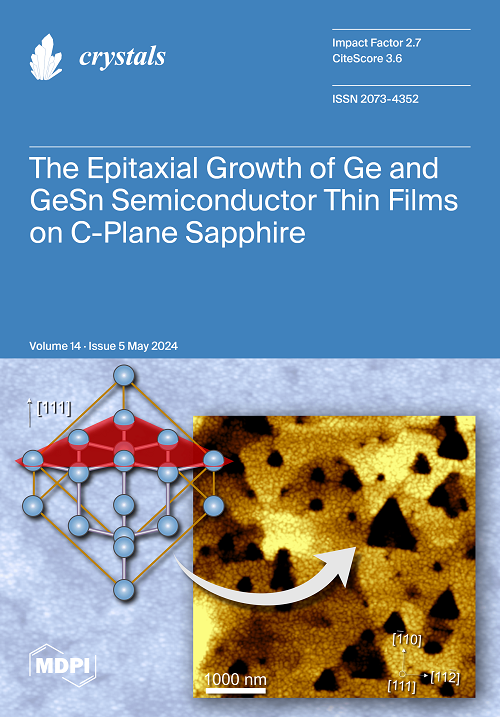助熔剂对废物发泡陶瓷的影响:微观结构与性能分析
IF 2.4
4区 材料科学
Q2 CRYSTALLOGRAPHY
引用次数: 0
摘要
以花岗岩废料为原料,碳化硅为发泡剂,制备了具有高闭合孔隙率的发泡陶瓷,并研究了 Na2O、K2O 和 MgO 对发泡陶瓷孔隙结构和性能的影响。结果表明,Na2O 和 K2O 都能降低熔体的粘度,促进液相的形成,含量的增加能增强坯体的发泡能力。当 Na2O 的用量为 4-6 wt%,K2O 的用量为 6-8 wt%时,发泡陶瓷孔隙结构的均匀性得到有效改善,样品表现出最佳性能,包括体积密度为 510.36-593.33 kg/m3,闭孔率为 68.24-78.04%,抗压强度为 1.33-2.66 MPa,吸水率为 0.57-1.31%。进一步增加 Na2O 和 K2O 的用量会破坏孔隙结构的均匀性,从而产生大量不规则的大孔。MgO 对调节发泡陶瓷的孔隙结构有轻微作用,用量的增加促进了绿柱石晶体的析出,为制备具有小孔隙的发泡陶瓷创造了条件。本文章由计算机程序翻译,如有差异,请以英文原文为准。
The Effect of Flux on a Waste-Derived Foamed Ceramic: Analysis of Microstructure and Properties
Foamed ceramics with high closed porosity were prepared using granite scrap as the raw material and silicon carbide as a foaming agent, and the effects of Na2O, K2O, and MgO on the pore structure and properties of the foamed ceramics were investigated. The results show that both Na2O and K2O could reduce the viscosity of the melt and promote the formation of the liquid phase, and the increase in content could enhance the foaming ability of the blank. When the dosage of Na2O was 4–6 wt% and the dosage of K2O was 6–8 wt%, the homogeneity of the pore structure of the foamed ceramics could be effectively improved, and the samples exhibited an optimal performance, including a bulk density of 510.36–593.33 kg/m3, a closed porosity of 68.24–78.04%, a compressive strength of 1.33–2.66 MPa, and a water absorption capacity of 0.57–1.31%. A further increase in the Na2O and K2O dosages destroyed the uniformity of the pore structure, resulting in a large number of irregular macropores. MgO had a slight effect on regulating the pore structure of the foamed ceramics, and the increase in dosage promoted the precipitation of forsterite crystals, creating conditions suitable for the preparation of foamed ceramics with small pores.
求助全文
通过发布文献求助,成功后即可免费获取论文全文。
去求助
来源期刊

Crystals
CRYSTALLOGRAPHYMATERIALS SCIENCE, MULTIDIS-MATERIALS SCIENCE, MULTIDISCIPLINARY
CiteScore
4.20
自引率
11.10%
发文量
1527
审稿时长
16.12 days
期刊介绍:
Crystals (ISSN 2073-4352) is an open access journal that covers all aspects of crystalline material research. Crystals can act as a reference, and as a publication resource, to the community. It publishes reviews, regular research articles, and short communications. Our aim is to encourage scientists to publish their experimental and theoretical results in as much detail as possible. Therefore, there is no restriction on article length. Full experimental details must be provided to enable the results to be reproduced. Crystals provides a forum for the advancement of our understanding of the nucleation, growth, processing, and characterization of crystalline materials. Their mechanical, chemical, electronic, magnetic, and optical properties, and their diverse applications, are all considered to be of importance.
 求助内容:
求助内容: 应助结果提醒方式:
应助结果提醒方式:


